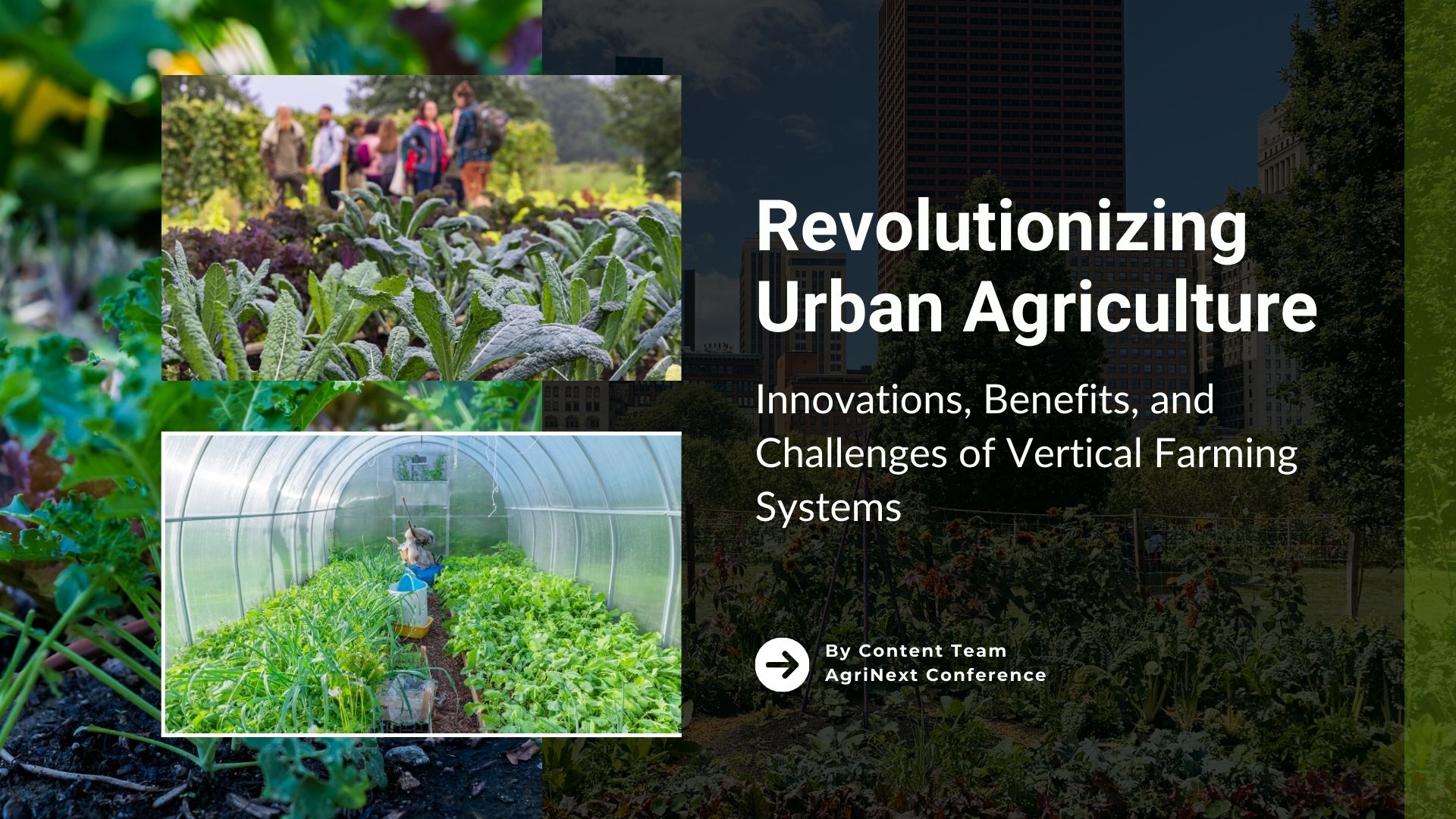
Introduction
Vertical farming systems have revolutionized urban agriculture by offering innovative solutions to grow food in vertically stacked layers, often within controlled environments. This method addresses the challenges of limited land availability and growing urban populations, making it a promising approach for sustainable food production in cities. In this blog, we will explore the innovations, benefits, and challenges of vertical farming.
Innovation in Vertical Farming System
Vertical farming utilizes cutting-edge technologies, such as hydroponics, aeroponics, and aquaponics, to optimize plant growth in a small footprint. These systems integrate advanced LED lighting, automated nutrient delivery, and climate control technologies to create optimal growing conditions year-round. The integration of AI and IoT devices further enhances productivity by monitoring and adjusting environmental factors in real-time.
Aeroponic Vertical Farming
Aeroponics, a soilless growing method that suspends roots in the air and delivers nutrients through a fine mist. This method significantly reduces water usage and enhances nutrient absorption, leading to faster growth rates.
AeroFarm is an award-winning vertical farming company tackling agriculture’s biggest challenges and growing real food for a brighter future for all.
Hydroponic Vertical Farming
Hydroponics, where plants are grown in nutrient-rich water rather than soil. This system allows precise control over nutrients, leading to higher yields and efficient water usage.
Plenty is a pioneering company in the field of hydroponics, revolutionizing agriculture by growing fresh produce in vertically stacked layers without soil. Their innovative approach uses 95% less water than traditional farming.
LED-based Vertical Farming
LED lighting is used to optimize plant growth and increase yields. The lights are tailored to emit the specific wavelengths that plants need, which maximizes photosynthesis and energy efficiency.
Royal Philips has partnered with Green Sense Farms (GSF) to create one of the largest indoor commercial farms utilizing LED grow lights.
AI-powered Vertical Farming
AI-powered monitoring and control systems optimize growing conditions and reduce waste. These systems analyze data in real-time, allowing for adjustments in light, temperature, and nutrients to ensure optimal plant health.
Vertical Farming with Robotics
In vertical farming robots are used to automate harvesting and other tasks in vertical farms. This innovation increases efficiency, reduces labour costs, and ensures consistent quality in produce.
Their harvester-mounted LIDAR system offers a 360° 3D view, allowing precise navigation through strawberry fields and enabling our autonomous harvester to avoid collisions with rows, people, and obstacles.
Modular Vertical Farming
Modular Vertical Farming is a method of growing plants in vertically stacked modules or units, often in an indoor environment. This approach offers flexibility, scalability, and efficiency, making it an attractive option for urban agriculture and commercial farming operations.
Bright Agrotech’s ZipGrow system features modular, vertical growing towers that can be easily expanded or moved. This flexibility allows for scalable operations, catering to both small and large-scale farming needs.
Aquaponic Vertical Farming
Aquaponics, integration of hydroponic and aquaculture systems to grow both plants and fish. This symbiotic relationship creates a sustainable system where fish waste provides nutrients for the plants, and the plants help clean the water for the fish.
Nelson and Pade, offers aquaponic systems that use 1/6 of the water to grow 8 times more food per acre, year-round, without pesticides or chemical fertilizers, in any climate.
Bioregenerative Vertical Farming
Bioregenerative systems, like those developed by BioRegenerate, incorporate microorganisms to break down organic waste, creating nutrient-rich fertilizer. This process closes the nutrient loop, promoting sustainability and reducing waste.
Indigo Agriculture Uses microorganisms to improve soil health and increase crop yields in vertical farms.
Climate-controlled Vertical Farming
Urban Crops operates climate-controlled facilities that use advanced systems to optimize growing conditions such as temperature, humidity, and CO2 levels. This allows for year-round production and consistent crop quality.
Infarm is developing a global network of climate-resilient farms that prioritize local communities and environmental sustainability.
Sustainable Vertical Farming
Sustainable Harvesters implements a system that uses solar power, rainwater harvesting, and organic growing methods to minimize environmental impact. This approach focuses on reducing the carbon footprint and enhancing sustainability in food production.
These innovations are pushing the boundaries of traditional agriculture, offering solutions that are more efficient, sustainable, and adaptable to urban environments.
Benefits of Vertical Farming
Space Efficiency
Vertical farming maximizes the use of space, enabling food production in urban areas where traditional farming isn’t practical.
Sustainability
These systems reduce water usage by up to 90% compared to traditional farming, and the controlled environment minimizes the need for pesticides and herbicides.
Reduced Food Miles
By growing food closer to urban centers, vertical farming reduces the carbon footprint associated with transporting food over long distances.
Year-Round Production
Vertical farms can operate continuously, unaffected by seasonal changes or adverse weather conditions, ensuring a steady supply of fresh produce.
Improved crop quality and consistency
Vertical farms often produce crops with higher nutritional value and uniform quality due to controlled growing conditions.
Challenges
High Initial Costs
Vertical farming requires significant upfront investment in technology and infrastructure. From automated systems to climate control, these costs can be a barrier for beginners, particularly small-scale farmers. However, ongoing innovations and potential government incentives may help reduce these expenses over time.
Startups like Zordi, led by CEO Gilwoo Lee, are actively working on solutions to make vertical farming more accessible and cost-effective. Their innovative approaches will be highlighted at the upcoming AgriNext event.
Energy Consumption
The reliance on artificial lighting, such as LED systems, and climate control technologies can result in high energy consumption, raising concerns about the sustainability of vertical farming. Some startups are exploring renewable energy sources and energy-efficient technologies to mitigate this challenge. These developments are crucial for enhancing the sustainability of vertical farming.
Technical Expertise
Managing a vertical farm requires a blend of skills in horticulture, technology, and data analytics. This need for specialized knowledge can be a hurdle for those without the necessary expertise.
Burak Karslioglu, a prominent speaker at AgriNext, is known for his expertise in integrating vertical farming systems with AI and robotics. His insights will be valuable for addressing this challenge, as he discusses how education and training can bridge the knowledge gap.
Scalability
While vertical farming is well-suited for urban environments, scaling these systems to meet global food demands is a significant challenge. Issues like cost, energy requirements, and resource management must be addressed to make vertical farming a viable solution on a larger scale.
This is where 80 Acres Farms, a pioneering vertical farming startup, is making strides. By utilizing cutting-edge technology like AI, robotics, and advanced data analytics, 80 Acres Farms is working to overcome these challenges. Their partnership with Siemens, for example, is a critical step toward scalability, enabling them to efficiently expand their operations while managing costs and resources effectively.
Conclusion
Vertical farming represents a significant innovation in urban agriculture, offering numerous benefits but also facing challenges. With continued advancements in technology and sustainability practices, vertical farming is poised to play a pivotal role in feeding the growing urban population while minimizing environmental impact. The future of urban agriculture looks promising as we overcome existing challenges.
AgriNext Awards, Conference & Expo: A Hub for Vertical Farming Innovation
As the vertical farming industry continues to evolve, events like AgriNext conference play a crucial role in bringing together innovators, thought leaders, and startups at the forefront of this transformation. With participants like Zordi, Agroclimatica, and AgriGuru, AgriNext is set to showcase the latest advancements in vertical farming, from cost-effective solutions to scalable technologies.
Thought leaders such as Gilwoo Lee and Burak Karslioglu will share their insights on overcoming the current challenges in vertical farming, making this event a pivotal moment for the future of urban agriculture. Attending AgriNext offers a unique opportunity to learn from and collaborate with the visionaries shaping the future of food production.
Signup For AgriNext Conference Newsletter


